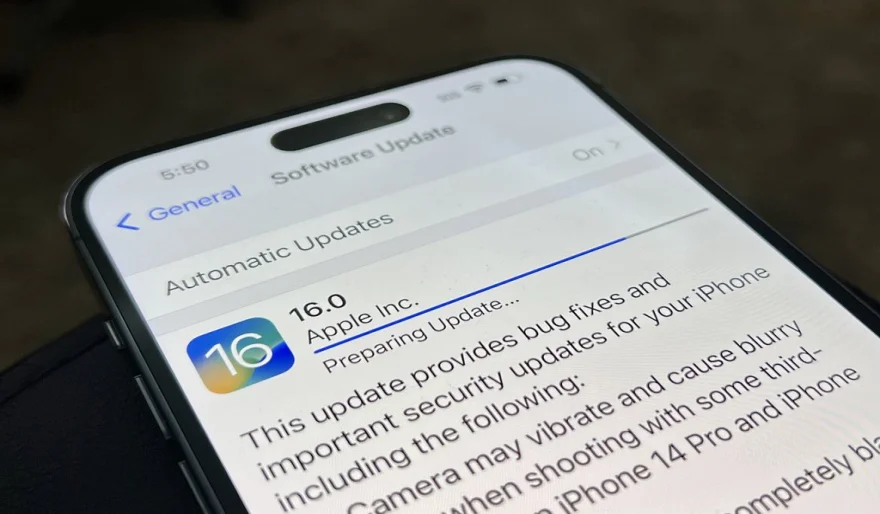How to Check for Software Updates on My Phone?
12 min read How to Check for Software Updates on My Phone? - written by Amine Rukhi, Content Creator February 13, 2024 15:27
How to Check for Software Updates on My Phone?
1. Introduction
Software updating is a practice that attempts to proactively remedy issues in both the system and software levels that affect the overall performance of the system. The main purpose of software maintenance is to modify and update software applications after delivery to correct faults and to improve performance. Often times software updating is bundled with other forms of maintenance, and therefore it is commonly mistaken as a practice that only resolves software issues. In actuality, software updating will resolve any latent or immediate software issues, help to prevent the same issues occurring in the future, and speed up the software in question. This in turn also speeds up the system because most software is so intertwined with the various functions of a system that it is impossible to separate the two.
Imagine that you’re driving home from work one day, and suddenly, your car begins to malfunction. Strange noises, an intermittent sputter, or difficulty with determining the gear shift may occur at any time, without warning. Driving becomes hazardous and unpredictable, so you take your car to the mechanic. The mechanic informs you that your car is in desperate need of a maintenance check and advises you to proactively maintain the vehicle so that trouble can be prevented before it happens. In a similar vein, software updating performs routine checks, preventative maintenance, and mandatory servicing on software for the best performance, removing the need to address software failures reactively and when they occur.
2. Accessing the Settings Menu
If the steps do not work for your specific device, we recommend using an internet search engine to find further assistance, or consult your service provider or phone manufacturer for further assistance. Now that you have accessed the settings menu, you can move on to the next step.
For phones with a physical keyboard: Find the settings menu button - This generally looks like a small icon that looks like a gear and can usually be found amongst your other applications. Please refer to your phone's user guide from the manufacturer if you cannot find this icon.
For phones with a touch screen and physical home button: Access the Quick Menu by swiping down from the top of the screen with 2 fingers, or by swiping down once and then again. Once you've accessed the Quick Menu, find the gear symbol to access the settings.
For phones with a touch screen and no physical buttons: Access the Quick Menu by swiping down from the top of the screen with 2 fingers, or by swiping down once and then again. Once you've accessed the Quick Menu, find the gear symbol to access the settings.
What you are looking for in this step is to find the settings menu for your mobile phone. Every mobile phone has different steps to find the settings menu, however here are some common phone types and the methods to access the settings menu:
3. Finding the Software Update Option
The process is very simple and does not ask for any dummy user to do any rocket science. All that is required is reading the instructions carefully as mentioned and clicking yes or no accordingly. Although it is always recommended to take all the backup of the data on the phone i.e. SMS, MMS, call logs, images, songs, videos, etc. to memory card to avoid any data loss during the update. And also, some updates go through successfully and sometimes an update installation is only aborted simply because a data transfer from computer to device connected via data cable causes installation of update to interrupt.
When the Settings app is opened and the About Device or About Phone option is selected, the next step is to look for the Software Update option given in the list. Depending upon the make and software of the phone, the option can be named as Software Update or System Firmware Update. This is the option which remains active only if a new version of software update is available. If any update released from the company is available, clicking on this option will start a step by step process of software update installation. This usually involves a couple of reboots and the phone will be up to date with the current version of software after update installation is complete.
4. Checking for Updates
Automatic Method * The location of Automatic Updates may vary. A common place to check is Home > Applications > Settings > About Device. Look around your settings to see if your device has this feature. * If you're still unsure you may need to consult your device manual. * To enable Automatic Updates you typically remove a checkmark from an option such as 'Enable Manual Updates' or something similar. This would mean your device will start automatically checking for updates and it will download and install them when available. Check your manual to see if Automatic Updates are available and how they are enabled. * On newer Android devices (2.3+), it is common for Automatic Updates to be enabled by the Google Play Store. This will be similar to the way applications automatically update. Your device will still check for system updates and installation will occur in the background. Check your manual to confirm.
Manual Method * You can check your software update to see if there are any updates available by going to Home > Applications > Settings > About Device > System Updates. * This path to software updates may differ depending on your device and Android version. * You may need to look around or consult your device manual if the above path doesn't lead you to system updates. * If you have a Samsung device and there is no System Updates option under the About Device in your settings menu, try one of these applications and it should guide you to your System Updates: o Samsung System Updates o Samsung software updates o Software updates, or update check - these applications have a little green Android icon. * On a Nokia, and some Sony Ericsson's the path to System Updates might be under the 'Phone' section of your settings. * Other devices may have the System Updates feature elsewhere. Check your manual as necessary.
Check your software update. (Menu path may differ depending on device)
5. Installing Software Updates
The easiest way to install a software update is by installing it over-the-air. Select Download Now and you will be taken to the download page. The software will automatically be downloaded to the phone. Installation will only take a few moments and it will install in the background while you are able to use the phone. Some phones may require a restart for the installation to be complete.
Software updates become available from the device's manufacturer, whenever they are ready to release it to the next iteration. Some devices may have the update pushed over-the-air to the device while others may require the use of a computer to download and install the update. Smartphones with the latter method include BlackBerry and Palm devices.
Whenever you see the crescent moon icon on your phone or on your computer, that means that software updates are available and they are ready to be installed on your devices. Just like updates available on tablets and computers, updates should be installed on smartphones to make sure that you are running the latest and greatest software and to ensure the phone is running without any issues.
User Comments (0)
Popular Apps










Editor's Choice









